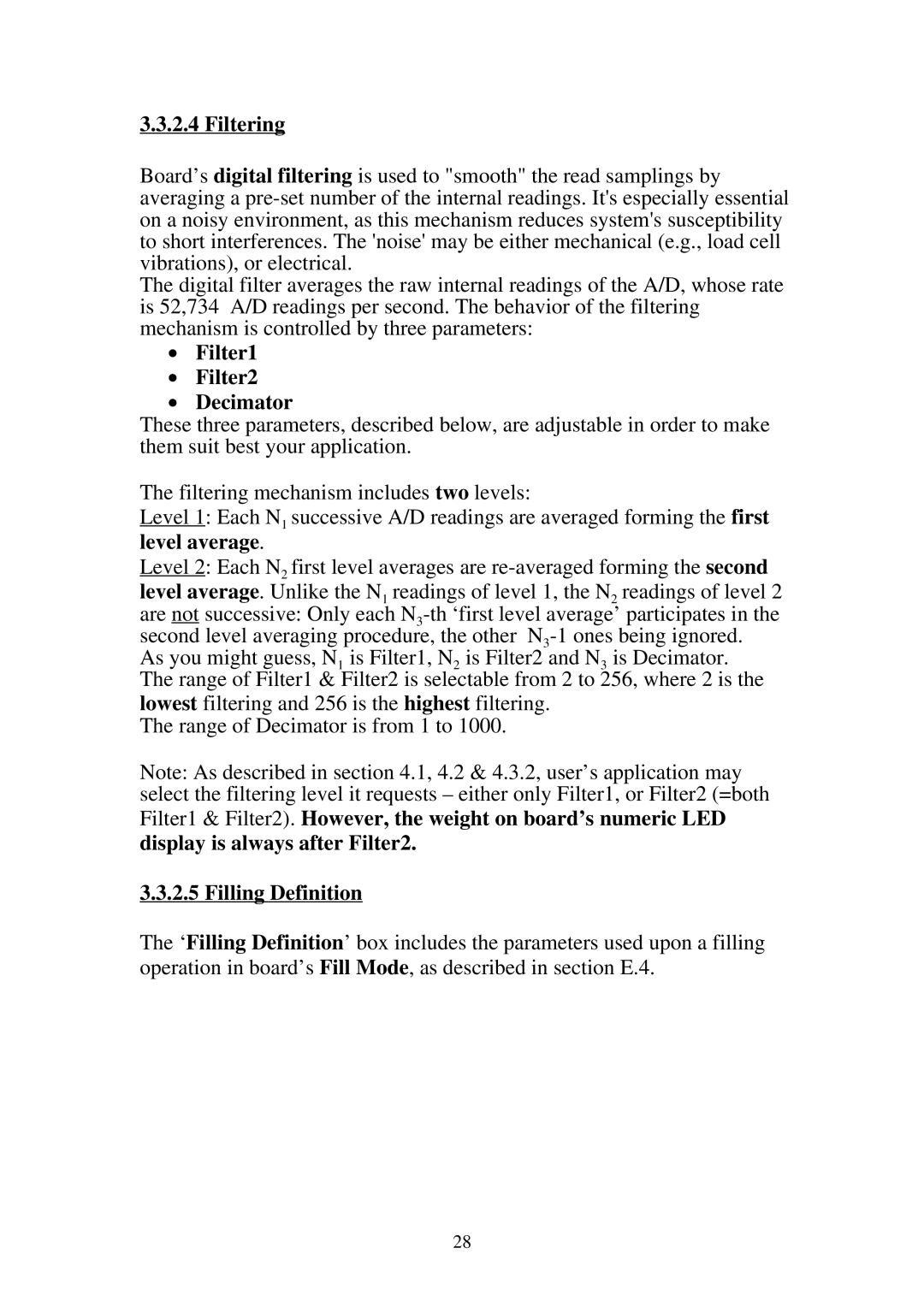3.3.2.4 Filtering
Board’s digital filtering is used to "smooth" the read samplings by averaging a
The digital filter averages the raw internal readings of the A/D, whose rate is 52,734 A/D readings per second. The behavior of the filtering mechanism is controlled by three parameters:
•Filter1
•Filter2
•Decimator
These three parameters, described below, are adjustable in order to make them suit best your application.
The filtering mechanism includes two levels:
Level 1: Each N1 successive A/D readings are averaged forming the first level average.
Level 2: Each N2 first level averages are
As you might guess, N1 is Filter1, N2 is Filter2 and N3 is Decimator. The range of Filter1 & Filter2 is selectable from 2 to 256, where 2 is the lowest filtering and 256 is the highest filtering.
The range of Decimator is from 1 to 1000.
Note: As described in section 4.1, 4.2 & 4.3.2, user’s application may select the filtering level it requests – either only Filter1, or Filter2 (=both Filter1 & Filter2). However, the weight on board’s numeric LED display is always after Filter2.
3.3.2.5 Filling Definition
The ‘Filling Definition’ box includes the parameters used upon a filling operation in board’s Fill Mode, as described in section E.4.
28
